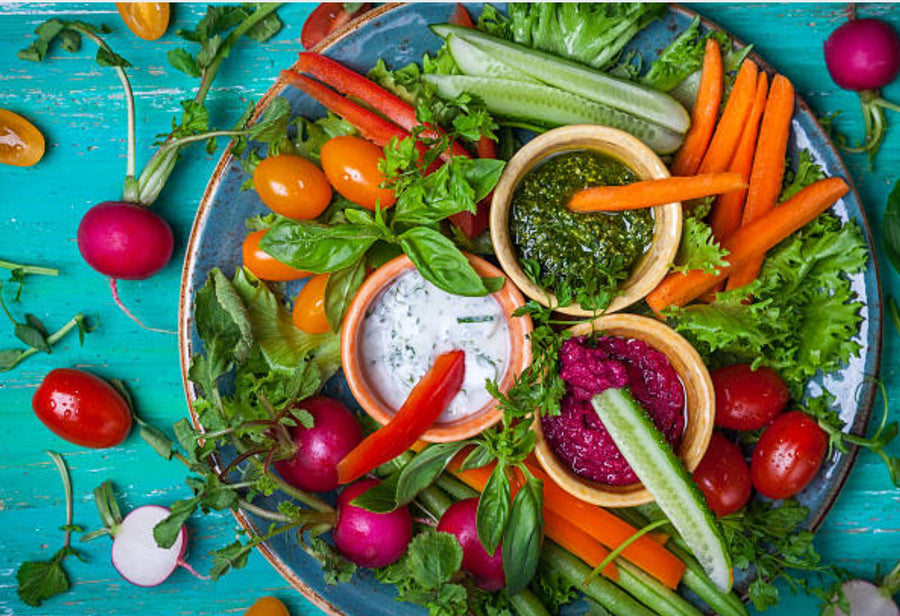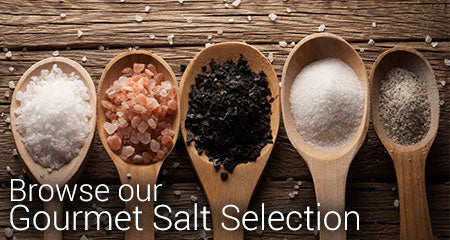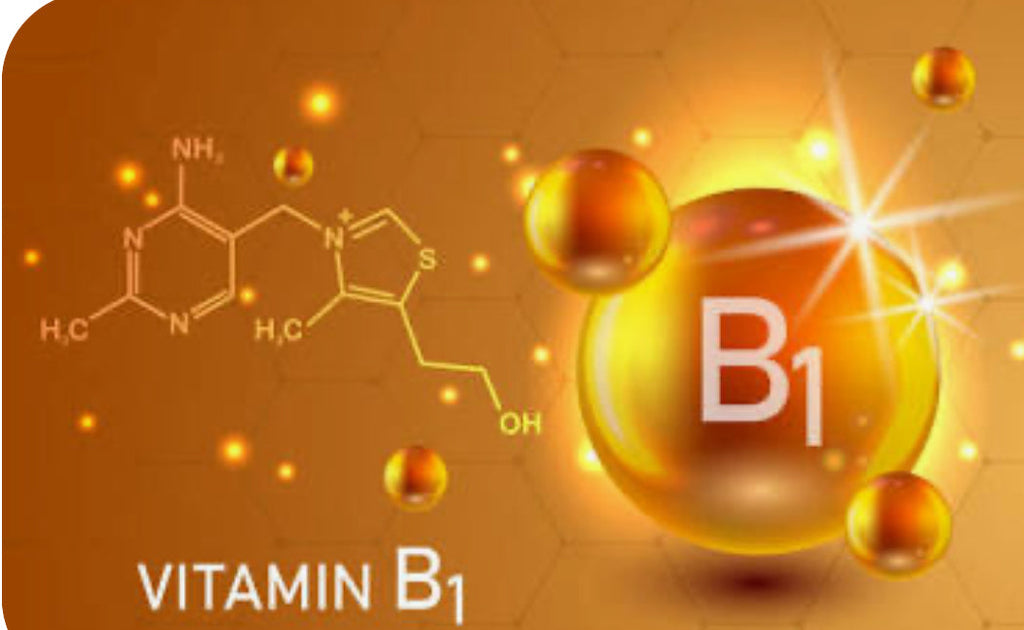Crudités Anyone? Order Of Eating Matters! - Blog # 59

Hello Everyone! Welcome back to another Friday blog. Today I wanted to share 10 amazing strategies or "hacks" that you can easily implement to control your blood sugar and insulin response. Why should we care? The shocking reality is that 93.2% of us are metabolically unwell. We are addicted to highly-processed food made in a laboratory - carbohydrate-rich and void of fiber and nutrients. We eat too often and too late at night, creating belly fat - visceral adipose tissue. The result is a myriad of annoying symptoms gradually progressing into chronic diseases including, fatty liver, obesity, insulin-resistance, T2D (type 2 diabetes), Alzheimer's, Cardiovascular disease and cancer, to name a few. Let's delve in.
This means our cells are being exposed to high levels of glucose and insulin for an extended period of time - THIS IS KEY!! SO much that these cells stop paying attention to insulin - a growth hormone - a storage hormone. Elevated insulin drives fuel into cells - fat cells, skeletal muscle, brain, liver... When we eat, insulin rises in response to what we eat. When your pancreas detects a high carbohydrate influx, it responds with a corresponding insulin release. Insulin stays elevated throughout the day. If we begin our day - that is break our fast - with a high carbohydrate meal that we call breakfast [cereal, pancakes, bagels and croissants for example] insulin will stay elevated all day wreaking havoc on our tissues - ex: thickening the arterial walls leading to hypertension (high blood pressure). However, when you begin with protein and healthy fat, you fuel your brain with ketones and provide amino acids to repair and build new tissues in the body.
If you start your meal with bread, for example, the carbohydrates/sugars are rapidly absorbed - we get a huge spike in insulin that hangs around for a long time attempting to get the sugar out of the blood and into the cells for energy. We get a huge glucose spike followed by a crash. The body senses danger and perceives this an emergency - driving hunger and cravings. The low blood sugar crash causes us to be hungry literally 90 minutes later - just in time for dessert!!! Restaurants know this! They bring "free" bread to the table before you've ordered your meal. This strategy pays off because you are more likely to order dessert when you start with a high carbohydrate appetizer.
When we lead with protein, we get a low spike, and with fat we get no insulin spike! Our blood sugar holds steady - without the rollercoaster highs and lows. It is well known in biology that when continually exposed to a substance, we become resistant or much less sensitive and responsive to that substance. It is not unlike a young mother with 3 young children all begging loudly for her attention, yet she doesn't seem to notice. Here in the U.S., diabetics are given insulin to force uptake of glucose from the bloodstream, with dire consequences. High insulin is toxic and damaging to cells. Insulin drives the conversion of glucose into fat to be stored wherever it can put it - around our organs and belly, in and around our organs, into muscle tissue creating marbling and under the skin as subcutaneous fat.
When we eat, glucose is released into the bloodstream. Our Pancreas responds by releasing insulin - based on the amount of glucose (sugar) it sees. Insulin binds to glucose and delivers it to the cell surface to be brought inside and turned into energy by the mitochondria. Think of this like a series of docking sites for cargo to be unloaded. When the docking sites are full, there’s no place for insulin to dock. If the docking sites are unloaded too slowly, glucose and insulin will stay in circulation. Our blood sugar will remain high. This explains our fatigue. We become resistant to insulin in multiple tissues, such as the brain, liver, fat tissue and skeletal muscle. When we get a huge rush of glucose into our bloodstream, insulin tries to rush in and scoop up all the glucose molecules.
However, with a huge spike, too many glucose molecules are present and begin sticking to our proteins and rendering them non-functional - this is called glycation. For example, our hemoglobin - You can see this when you test your hemoglobin A1C. It is a direct reflection of how much of your oxygen-carrying proteins are NON-FUNCTIONAL. So, you can’t carry oxygen to where it needs to go. This is why diabetics get neuropathy. When a molecule becomes glycated, it is damaged and rendered disabled or non-functional. This leads to inflammation and production of ROS (reactive oxygen species) - inflammatory molecules that damage whatever they touch - many things including our DNA. This is how cancer and many other diseases begin.
Glycation literally changes the texture of our tissues. It becomes hardened, like crust on crème brûlée or the outer crust on toast. It damages our other cells and eventually entire organs. If this happens in the brain, cells can't communicate, and we lose cognition. We are in an inflamed state - our brain is on fire. When we continue to overload our mitochondria with too much glucose (from carbs and sugar), they begin to die and become dysfunctional. This changes our tissues - they become weakened and can let-go during surgery, for example. If we continue to glycate our tissues, it is the equivalent of toasting our insides till we are fully cooked - then we die. The more glucose/insulin spikes, the more damage from AGEs (advanced glycation end products) - we end up literally cooking ourselves on the inside and don’t even realize it’s happening. We feel it in the form of fatigue, irritability, joint pain, achiness, brain fog, memory problems, etc. We end up with cravings and hunger - even though we just ate 90 min ago - cravings for sweet foods, wake up not feeling rested, tired after meals, need coffee to keep going, acne, hormonal imbalance, belly fat…
So, a fatty liver doesn’t happen from eating fat. It is due to a high carbohydrate diet. We begin storing glucose in the form of belly fat. Belly fat is not just an annoyance for us. It behaves as an organ - releasing hormones and other molecules that make the problem even worse. It messes with our other hormones and results in many conditions, including PCOS (polycystic ovarian syndrome). We get fatter. Our cholesterol goes up and becomes imbalanced. The more belly fat you have, the more insulin-resistant you likely are. You can even have “normal” fasting blood sugar, but your insulin level can remain high and cause tremendous damage. And guess what? Your MD is NOT checking your fasting insulin level!!! Obviously, we NEED this to change! Start asking/demanding EVERY time. If your MD refuses, get it done on your own for $25 and complain to your insurance company.
How can you know what’s happening in your body? Here are a few bloodwork tests that will give you a fairly accurate picture of how your body is performing metabolically. You can calculate your level of insulin-resistance and risk of T2D (type 2 diabetes). Go back and check previous bloodwork as well to see the trend and direction you've been going - and ASK your MD to check fasting insulin!
- Fasting Insulin -
- ideal range is 1-3
- >5 is dangerous according to the latest from Boston Heart. Elevated insulin does a lot of damage:
- Primary risk factor for heart disease: responsible for >70% HTN
- Body starts storing glucose and insulin in fat – skin tags, eyes, liver, abdominal fat
- Increases Mg (magnesium) loss - secretion into urine. Mg is cofactor for the insulin receptor! If low Mg, 79% increased risk of T2D, 44% increased risk pre-diabetes
- damages blood vessels, causes HTN, cholesterol imbalance
- When insulin is present, Lipoprotein Lipase enzyme is blocked, so you can’t get into ketosis and can’t lose weight.
- Insulin tries to “sell” glucose to muscles, fat cells, brain, liver - but fuel can't get in due to resistance. The pancreas pumps out even more insulin to force glucose into cells.
- Fasting Glucose -
- ideal range = 70-85
- 126 = diabetes. Elevated blood sugar sticks to proteins in the blood vessel wall causing decreased elasticity and atherosclerosis,
- significantly damages the microvasculature to eyes (retina), organs (particularly kidneys), nerves
- depletes magnesium and B vitamins.
- Requires NO (nitric oxide) for glucose uptake into the cell. When you have insulin resistance, insulin can’t get glucose into the cell and blood sugar rises. When it is 126 you are considered diabetic.
- Hyperglycemia (high blood glucose) = AGEs (advanced glycation end products) + inflammatory cytokines = glycation of proteins and systemic inflammation.
- HbA1C - this test is a measure of the percentage of hemoglobin in your blood that is glycated and unable to deliver O2 to tissues.
- Ideal = <5.0
- 5-6.0 = increased risk of heart failure.
- 5.7-6.4 = prediabetes
- 6.5+ = diabetes.
- The combination of elevated A1C and CRP (C-reactive protein) - an inflammatory marker in non-diabetics is associated with advanced early carotid atherosclerosis progression and a 3-fold increase in a major vascular event.
- Every 1% increase in A1C = 38% increased risk of macro vascular event, 40% micro vascular event and 38% increased risk of death, wrinkles, cataracts, dementia, CVD
- Triglycerides/HDL-C ratio - Triglycerides
- ideal = <1.0
- >1.0 = IR (insulin resistance)
- >1.5 = severe IR
- Triglycerides - ideal is 40-60
- Triglycerides >60 causes vascular damage.
- Triglycerides are carried on vLDL (very low density lipoproteins) - they are more adherent and susceptible/prone to oxidation and glycation. They stay in circulation x 5-7 days.
- HOMA-IR (homeostatic model assessment of insulin resistance)
- Ideal = <1.0
- 1.0-1.8= IR
- 1.9-2.8=strong IR
- 2.9+=severe IR
- To calculate: fasting glucose x fasting insulin/401.98 = HOMA-IR
- Vitamin D3
- ideal = 70-100
- hsCRP (high-sensitivity C-reactive protein, an inflammatory marker)
- ideal = <.5
Outside of bloodwork, one of the most reliable tests is to measure your waist, as well as your waist/hip ratio.
- Women - ideal = <35 - 35+ = increased risk CVD and HTN
- Men - ideal = < 40 - Belly fat acts like an organ and converts testosterone into estrogen via a hormone called aromatase – lowering overall testosterone.
Okay, let's look at how we can literally “hack” the system without totally giving up some foods we really enjoy.
Hack #1: Eat your veggies first. Let’s say you have a plate of food with chicken, rice and steamed vegetables. If you jump straight in and start eating the rice, your body sees a sugar bomb. This signals the pancreas to secrete a big load of insulin to handle the job. You will get a huge spike in insulin in real time. However, if you start with your vegetables, the fiber in the vegetables becomes a viscous mesh that lines and coats your gut lining - literally slowing the absorption of glucose. It pushes the glucose past the small intestine into the jejunum, ileum and colon where microbes can feed. You get a much smaller spike. Go for your protein next - keeping a flatter line with less insulin demand. Protein is very satiating - aim for roughly 1G protein/pound of ideal body weight. Now when you start to eat your rice it is absorbed much more slowly, giving you a steadier level. You also may be beginning to feel full and satiated after your protein and only eat half of your rice as well! By changing nothing but the order of food you are eating, you can reduce your glucose and insulin spike by 75%!!!!! WHAT??? That’s incredible!!
Hack #2: Drink a glass of water with 1-2T vinegar, such as apple cider vinegar (ACV) up to 30 min before your meal. It has been shown in studies to slow the absorption of glucose comparable to the diabetic drug metformin without any of the side effects! Say what???!!! How does it do this? Acetic acid affects an enzyme called α-amylase that breaks down starches into glucose. It literally slows this process down, resulting in a slower drip of glucose into the bloodstream! In addition, it signals the muscles to store glucose as glycogen, further reducing the glucose hit by up to 30%! WOW!!! A study looking at women with PCOS who took ACV for 40 days, began to ovulate normally. One woman in the study who was previously infertile, continued for 90 days and became pregnant! That’s nothing short of miraculous if you ask me. Why was this not all over the news? Vinegar is cheap. Drug companies can’t market it, although some companies are now making ACV gummies.
Hack #3: Start your day with a savory breakfast that will set your body for the day. Your body is most sensitive to nutrients right after fasting. Because insulin hangs around much longer than glucose, you don’t realize it’s high. Don’t drink that glass of OJ. It is a sugar bomb. A savory breakfast full of good fats and protein will keep you satisfied longer with less rollercoaster spikes the rest of the day. In recent studies, individuals given a breakfast with good fats and protein didn’t get hungry for nearly 5 hours, while the group given high carbohydrate and starchy breakfast was hungry 90 min-2 hours later. This is NOT YOUR FAULT! We have been told to eat cereal and oatmeal for breakfast, pancakes, biscuits and gravy. This is a lie - invented by Kellogg's to push corn flakes on all of us. Their slogan was "breakfast, the most important meal of the day." It causes HUGE glucose and insulin spikes in the bloodstream. We get hungry a couple hours later and give in to that cookie, chips, soda or even another cup of coffee to make us feel better. Why do you think restaurants bring hot bread to the table at the very beginning? Out of the goodness of their heart? NO! They know with a carbohydrate load from the bread that about 90 mins later we WILL order DESSERT!! We keep spiking our blood sugar over and over and over until our cells are resistant to the constant noise.
Hack #4: Use your muscles after eating for at least 10-20 min. Your muscles are like sponges soaking up glucose from the blood when you use them after a meal. They are your biggest allies. Studies show that even taking a walk after dinner reduces blood glucose and resulting insulin spike. If it is raining or cold, you can get creative. Dance to 3 of your favorite songs. Do planks or wall sits while watching a movie. Use your muscles in some way. Clean your kitchen, mop the floor. Do the laundry. Don’t just SIT! This gives you much more energy and avoids the post-meal sleepiness many of us experience.
Hack #5: NO naked carbohydrates. You want to avoid sugar or starch that is on its own. You can lower your glucose load by putting healthy fat or protein with it. So, rather than just eating a bowl of pineapple, add some Greek yogurt and maybe some nuts. Eat your apple with some cheese or nut butter. If you make a smoothie with banana and strawberries, eat some almond butter or add some EVOO to your smoothie to lessen the glucose load and that huge spike.
Hack #6: EVOO drizzled on veggies or salad. So, now that you know to eat veggies first, add high polyphenol EVOO to your veggies or salad! Not only is EVOO the single best fat on the planet, it does NOT create a glucose spike, it is full of powerful anti-inflammatory phytonutrients and polyphenols scooping up those ROS and preventing damage to our tissues, and we are satiated sooner so we end up eating less overall!!! Not only do you get that fiber mesh coating your intestinal wall, but a micellar solution from the EVOO that has been shown to heal the gut lining, and microbially selective. That means EVOO encourages growth of good organisms, while killing bad guys.
Hack #7: HP-EVOO shot first thing in the morning. When you take high-polyphenol EVOO on an empty stomach first thing in the morning, you have ZERO glucose spike. The Oleic Acid goes right to work, signaling the hypothalamus in the brain to go into a fat-burning mode. “Oleic acid markedly inhibits glucose production and food intake…which further limits further delivery of nutrients into the circulation. The anorectic effect of oleic acid was independent of leptin and was accompanied by a decrease in the hypothalamic expression of neuropeptide Y.” Amazingly, you are not hungry for several hours. You stay in a fat-burning mode for quite awhile, helping reverse previous damage to tissues and moving fat from organs to subcutaneous (under the skin) where it can be used for fuel. Check out my personal journey!!
Hack #8: Reduce chronic stress. When we are stressed, cortisol is produced. It can be a good thing short-term, but a huge problem long-term. Our body thinks “fight or flight” in preparation for running away from perceived danger, like a tiger. Some things increase: heart rate, blood pressure, blood sugar, insulin levels, visceral fat, gluconeogenesis (production of glucose from non-carbohydrates), glyconeogensis (production of glycogen). Other things decrease or break down: cellular repair, bone loss, muscle wasting, inhibited immune system (except for IgE, involved with allergies), sleep, kidney function (GFR) glomerular filtration rate. When cortisol levels remain high, we experience weight gain, insulin resistance, HTN, fatigue, changes in mood, irritability, flushed face, thinning skin, difficulty concentrating. It can make us crave sugar and carbohydrates, making it worse. Cortisol is part of our diurnal rhythm. Levels are naturally high in the morning and low in the afternoon/evening. This is why blood pressure is generally higher in the am.
Hack #9: Rest: Allow your body to rest from eating while you enhance your sleep. Try to eat your meals within a 6-hour window several days per week - giving your body 18 hours of rest to heal, make new cells, enhance your immune system and upgrade all organ function. Intermittent fasting is important to incorporate several days per week, but having some days with breakfast is also important, especially to maintain proper hormone production.
Hack #10: Feed your microbiome: Your gut microbiome plays a huge role in metabolism. Did you know that if you take poop from a skinny mouse and put it in a fat mouse, the fat mouse will get skinny too? This is profound. How can this be? The microbiome of the skinny mouse looks significantly different in number and amount of the residing species. This is the same for us. We can grow and diversify the microbial community in the gut by eating a wide variety of colored vegetables. This is why you should “eat the rainbow” of veggies. Not only are the varied phytonutrients crucial for our health and wellbeing, but they also contain the important microbes to enhance the function of our gut. Try new foods. Make your plate a rainbow and eat your veggies first!!! They are full of fiber (food for the microbes) that will line your gut and slow down the absorption of glucose, preventing the huge glucose spike and subsequent insulin resistance.
So, until next time my friends…Drink, Drizzle, Digest HP-EVOO at least 4T raw daily, - use more for cooking and drizzling onto your food - eat the rainbow of organic or wild-sourced or organic veggies (7-9 C) and low-glycemic fruits (to get the rainbow of gut microbes!) - eat wild-caught, pasture-raised, grass-fed - get plenty of sunshine - supplement magnesium, zinc, vitamin D3 + K2 - get your trace minerals and electrolytes with good sea salt - Celtic is hand-harvested and Himalayan was formed before plastics - eat foods high in lutein - drink your body weight in oz of water - get a good pre/probiotic - consume digestible and indigestible fiber for your gut microbes - adaptogens (such as mushrooms) and methylation donors (kale, beets, spinach, cruciferous, lion’s mane…), marjoram, rosemary, oregano, parsley and other herbs to detox, enhance overall health and reverse aging and disease - exercise your body and mind - add a few minutes of mindful meditation and breathing exercises to your day to combat stress - take a hot Epsom salt bath and follow with a cold shower/ice plunge - practice “earthing” as an anti-inflammatory - remove EMF (electromagnetic frequency) devices and blue light - use IR (infrared) from incandescent lighting, non-toxic candle or light a fire to enhance sleep and...turn off the light!! #HP-EVOO
This blog is intended for informational purposes only. Discuss strategies with your Healthcare Practitioner.







Comments (3)
Thank you so much for your Friday blogs. They just seem to get more interesting and informative every week. I appreciate you.
I have been told that cooking with EVOO is not good because of the heat. I cook with it all of the time. Should I stop?
Julie. My husband and I look forward to your weekly blogs! They are rich with wisdom on eating healthy and clean! Thank you so much!
Gary n Sherrie Rundle